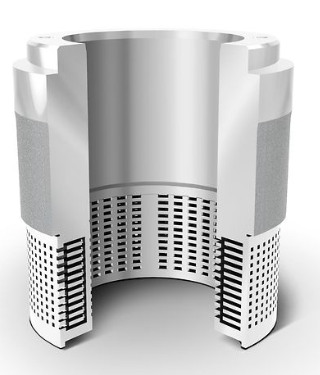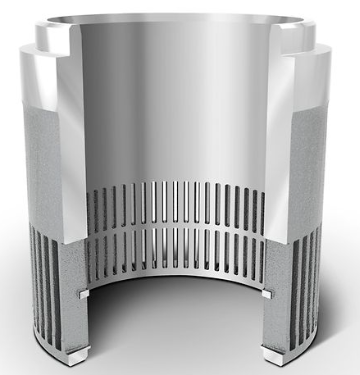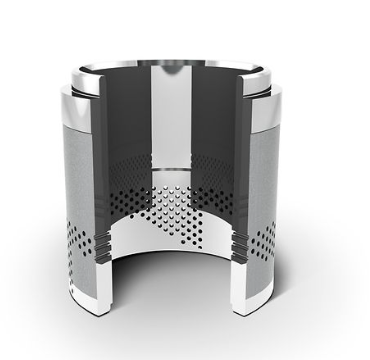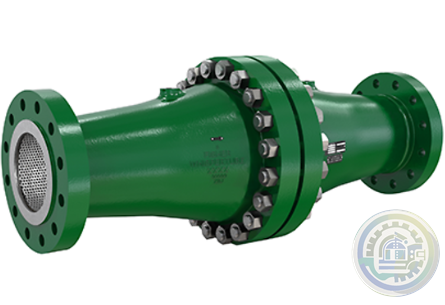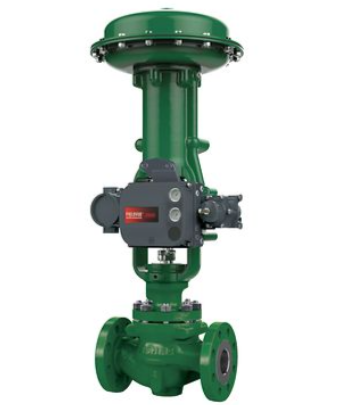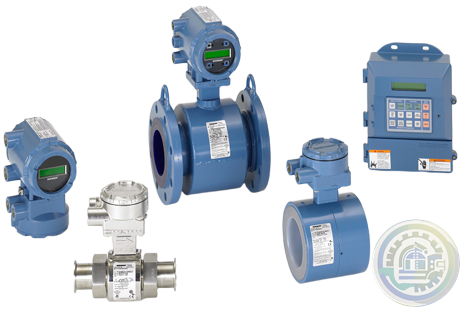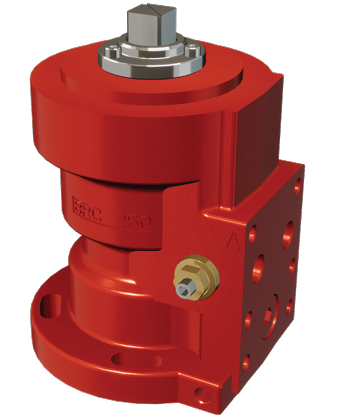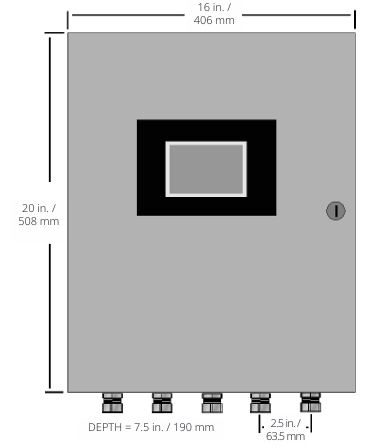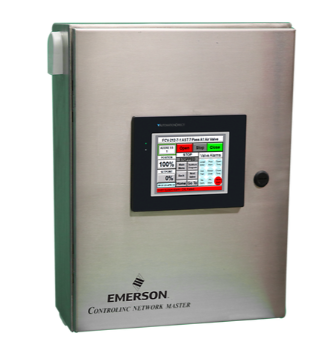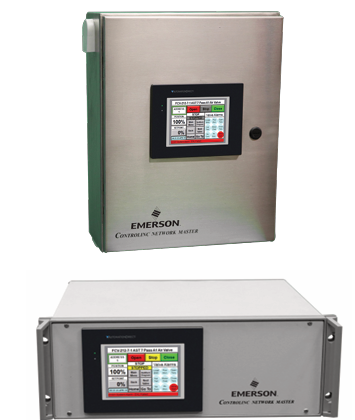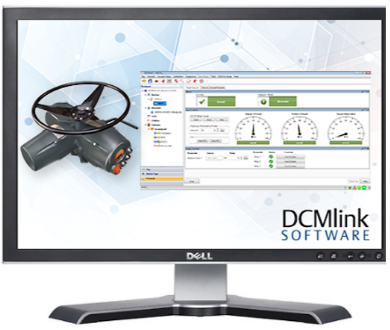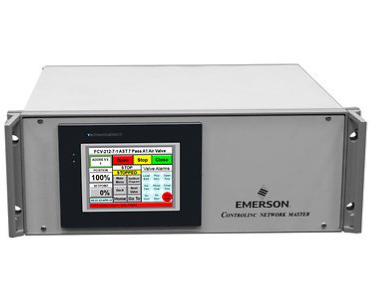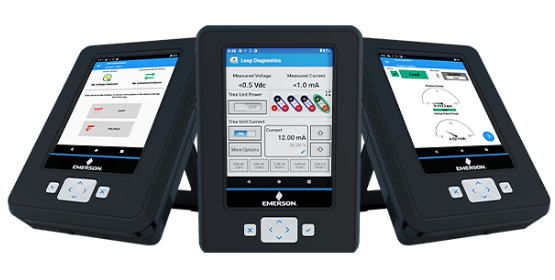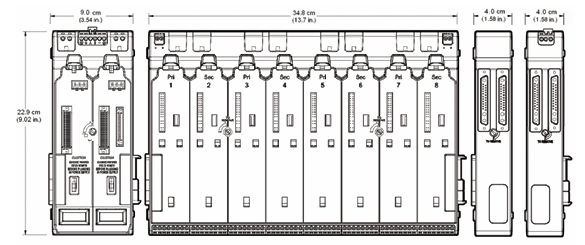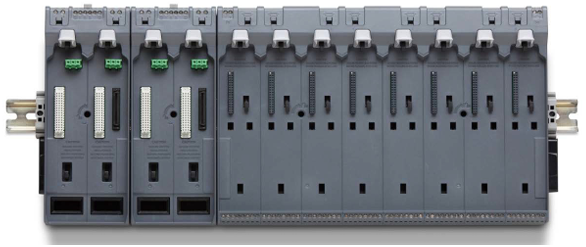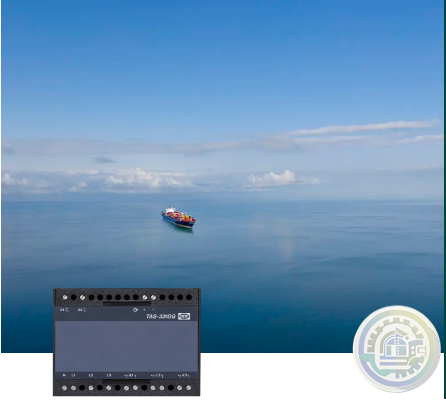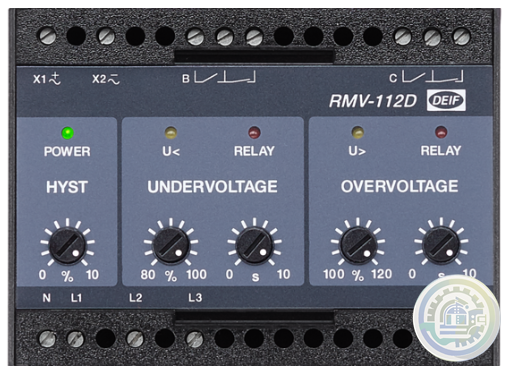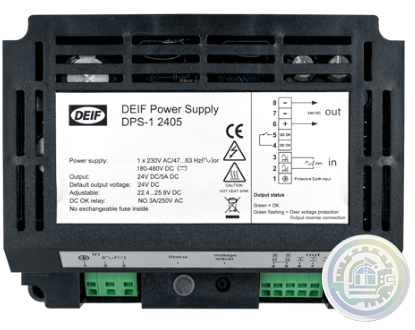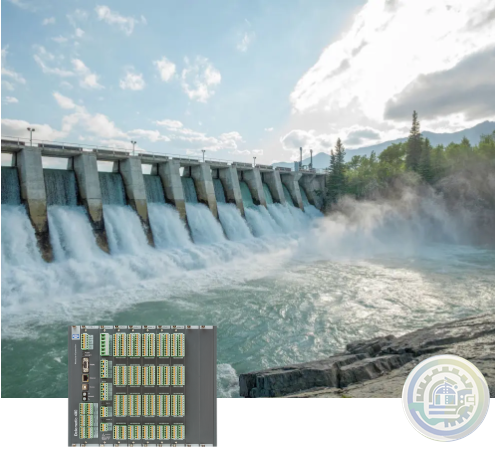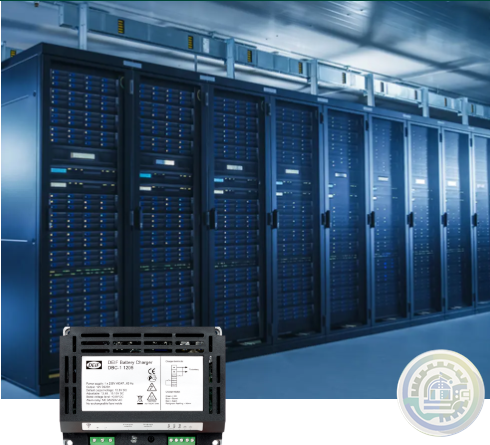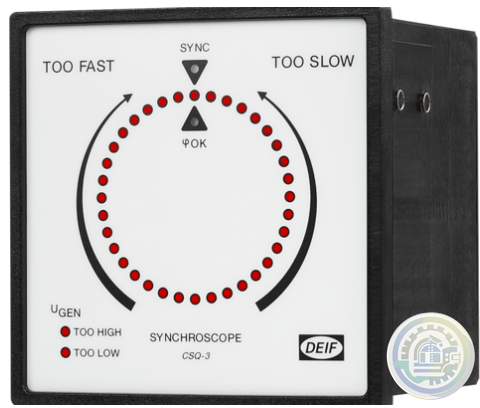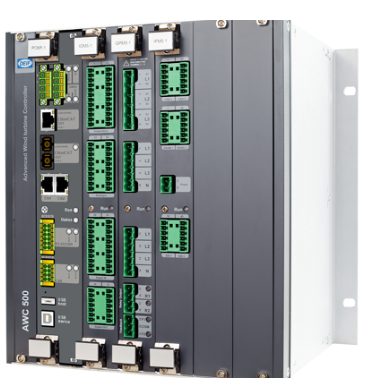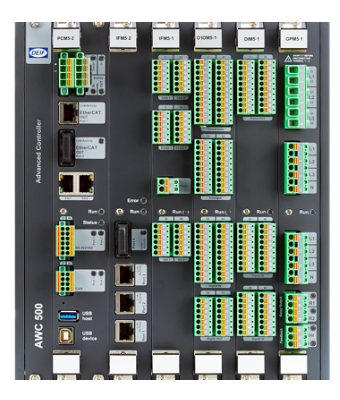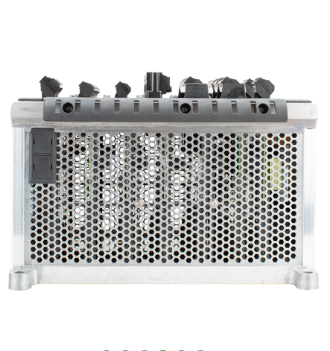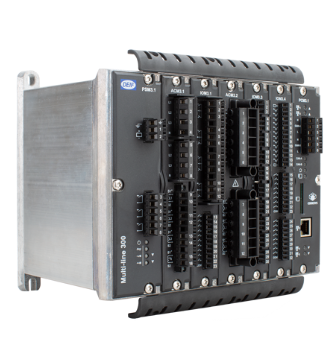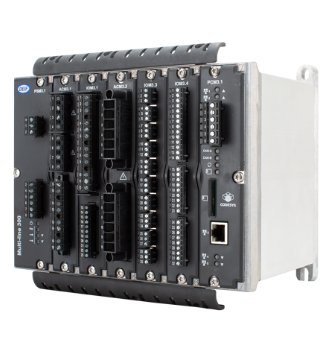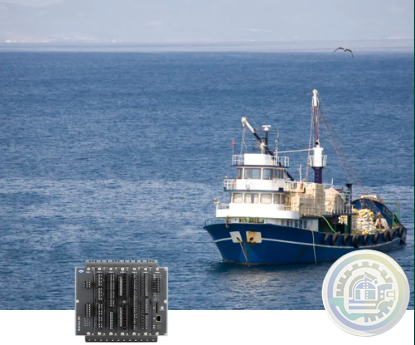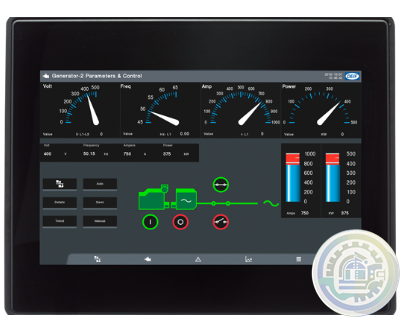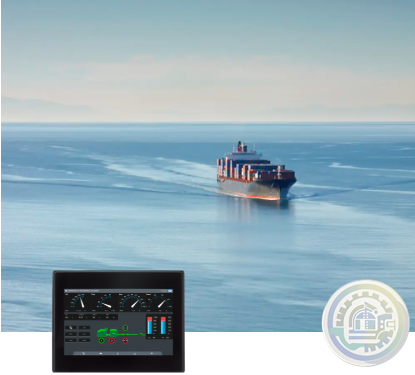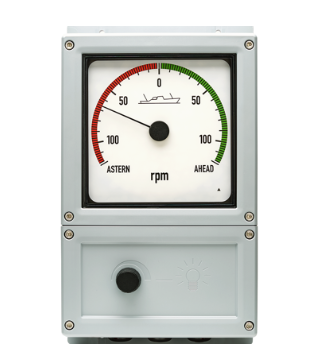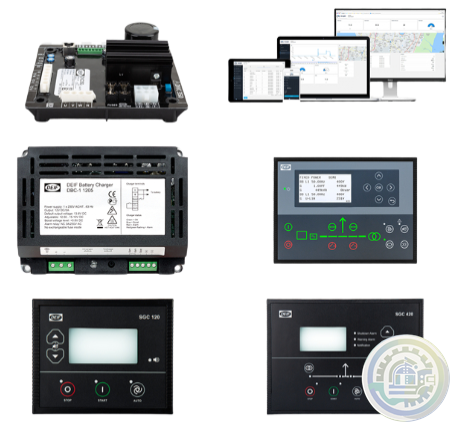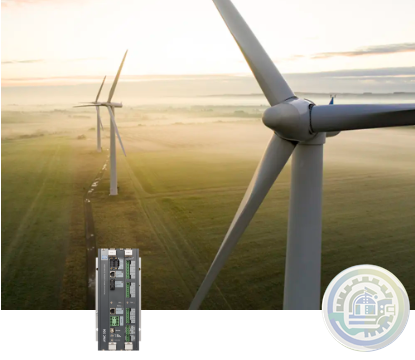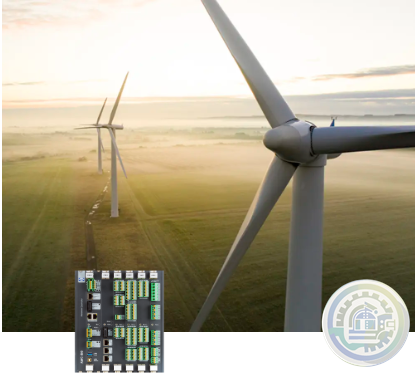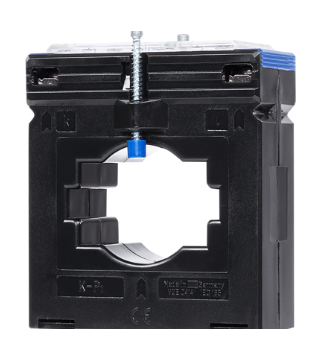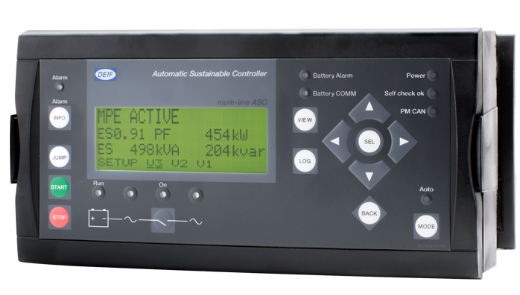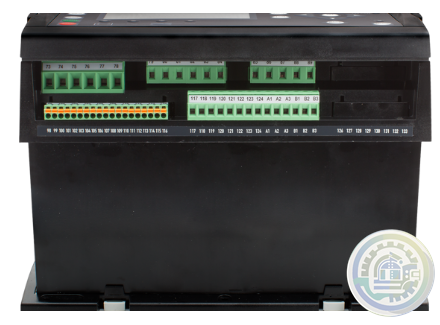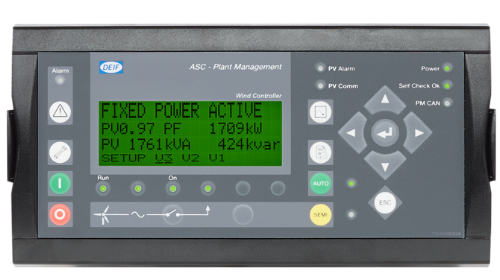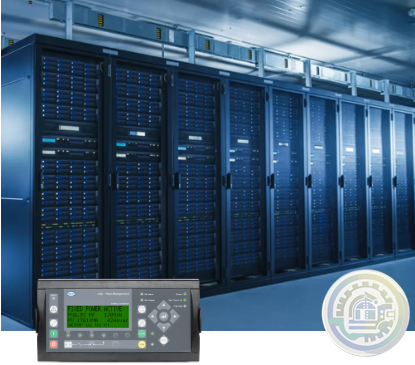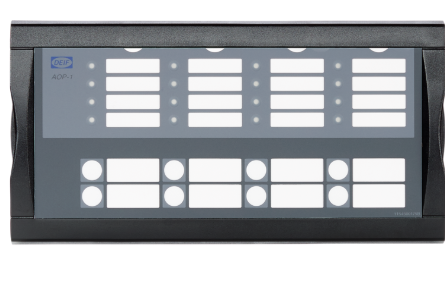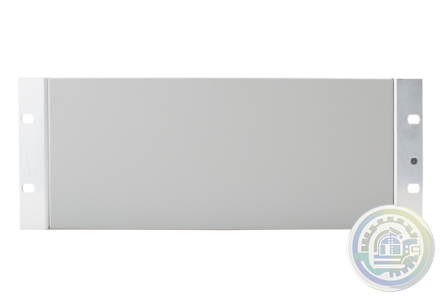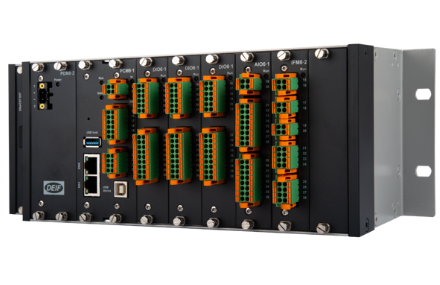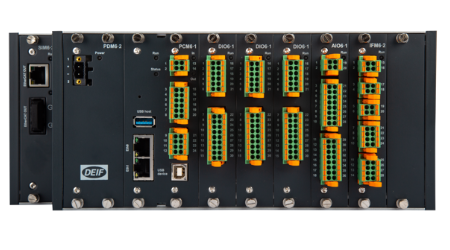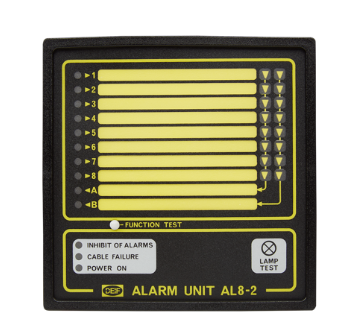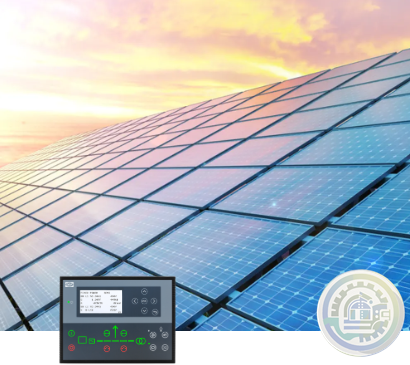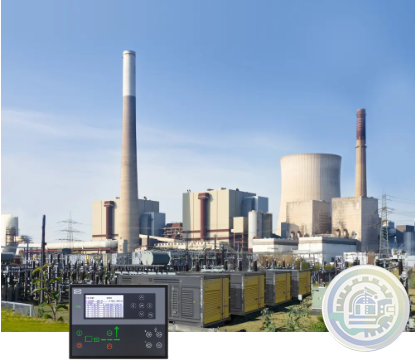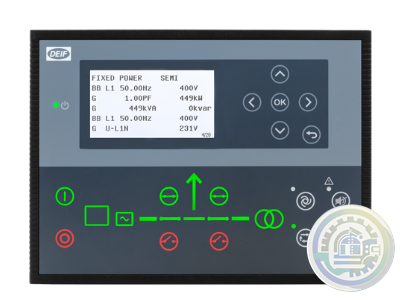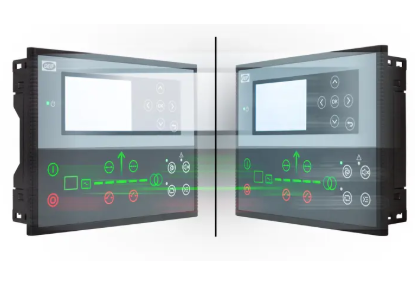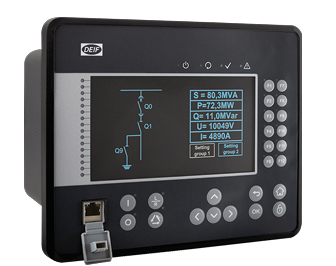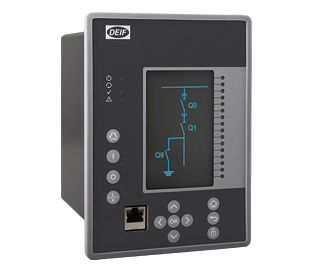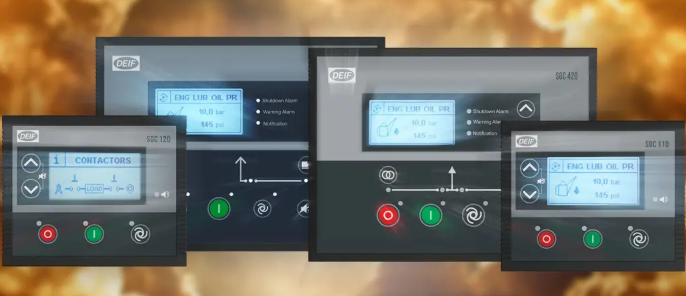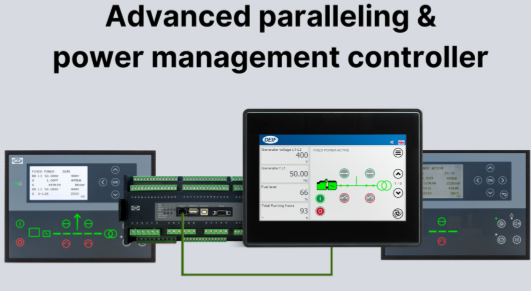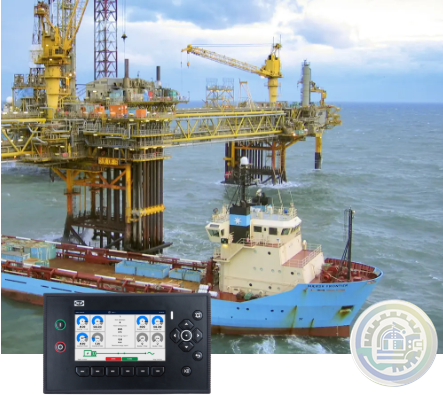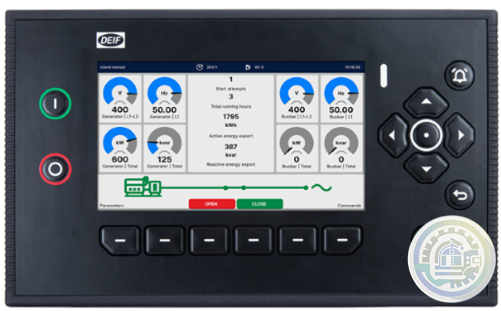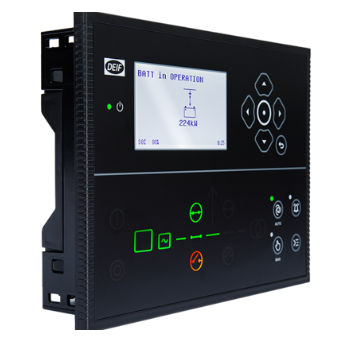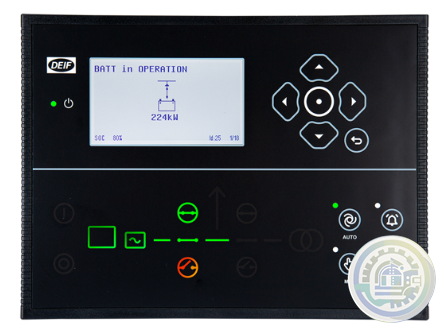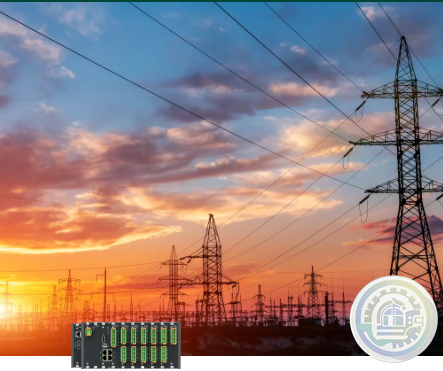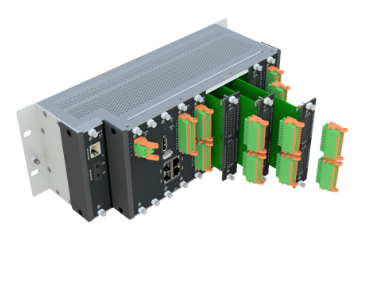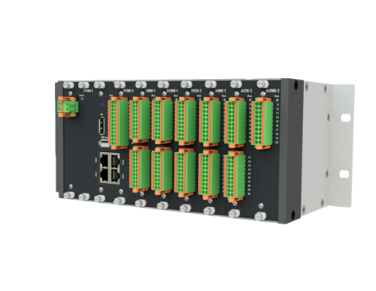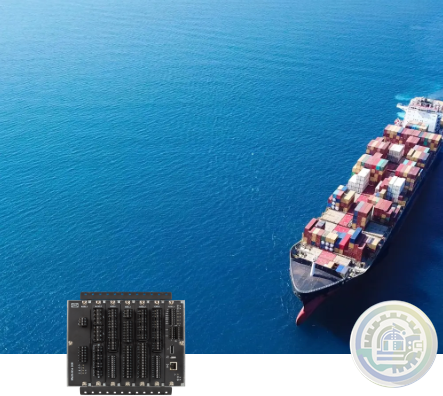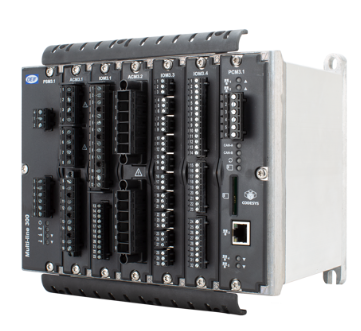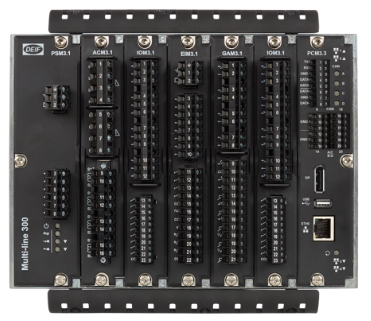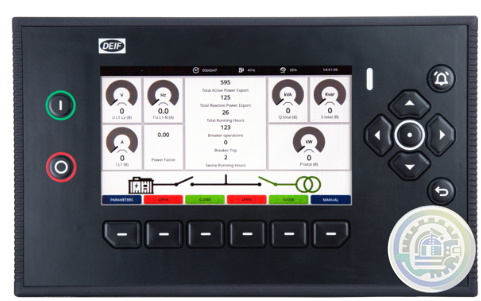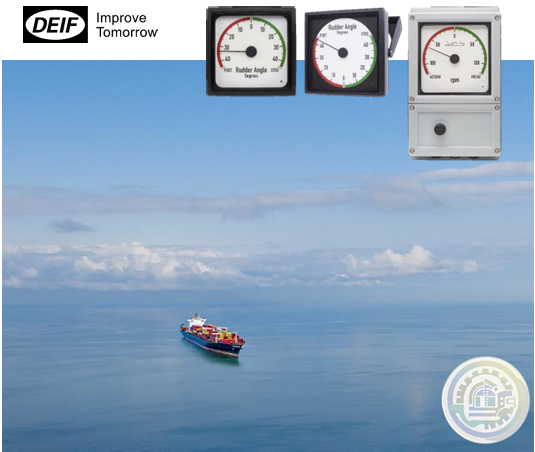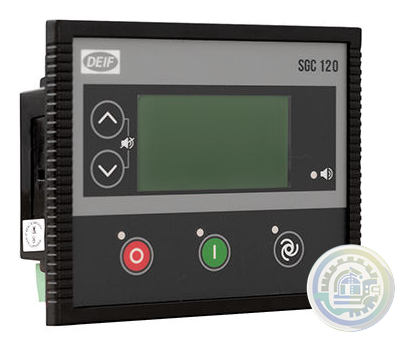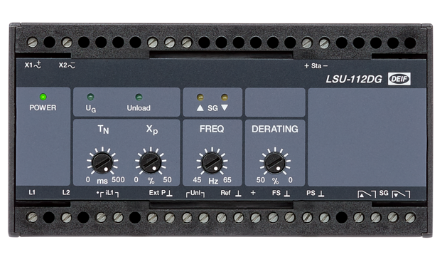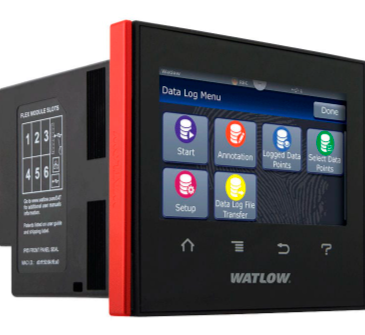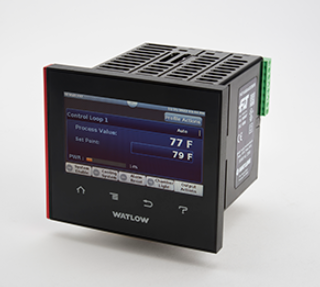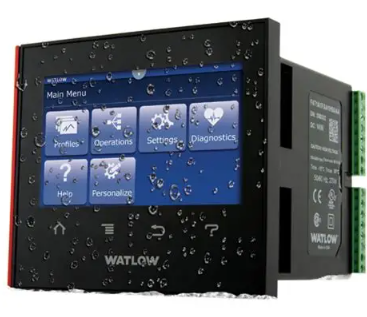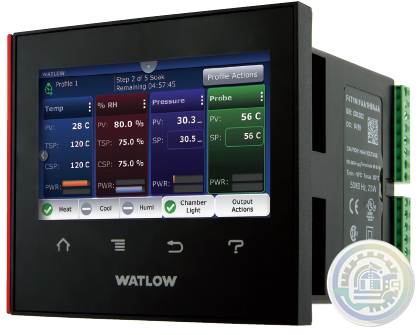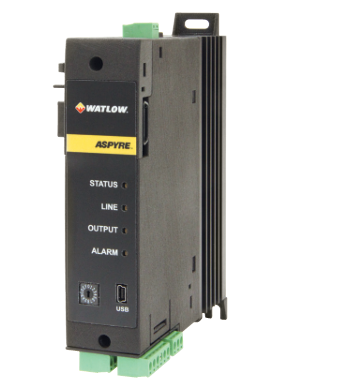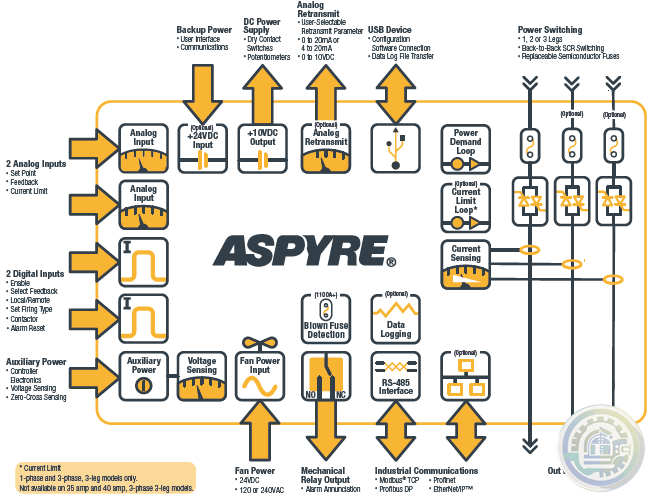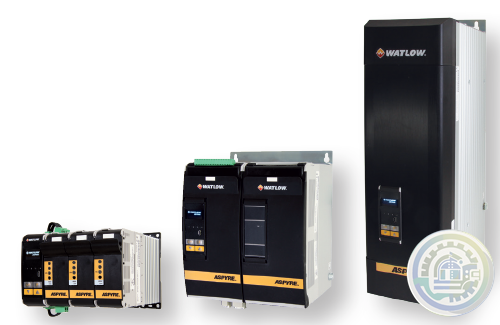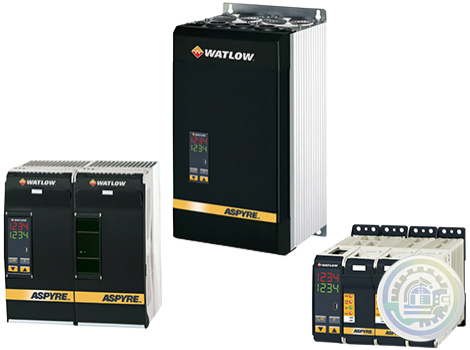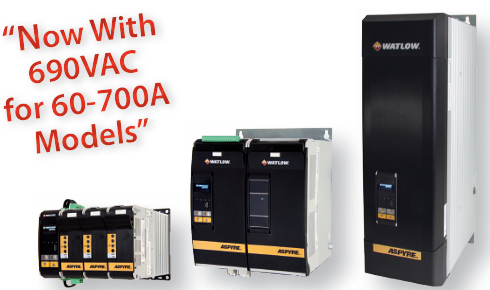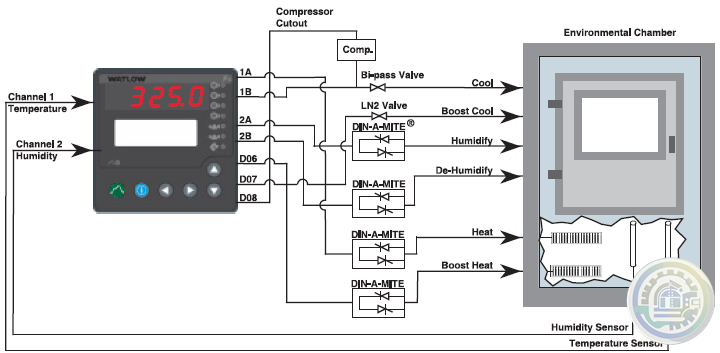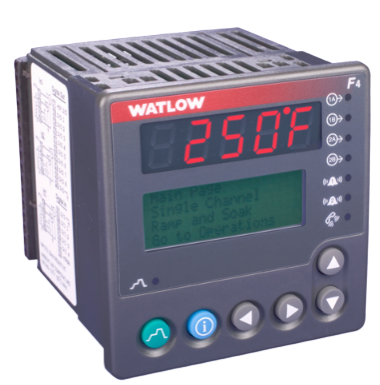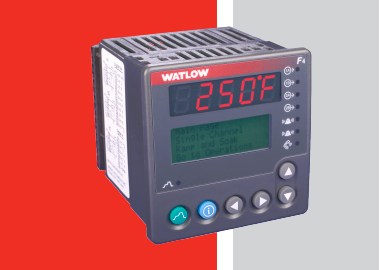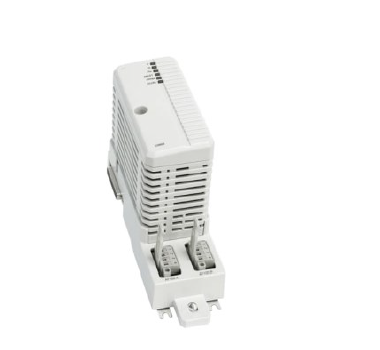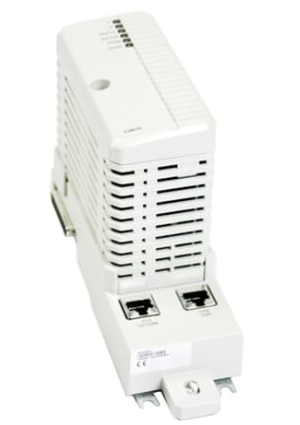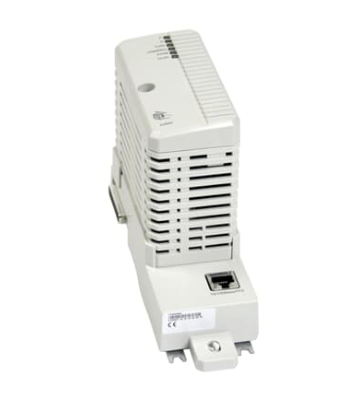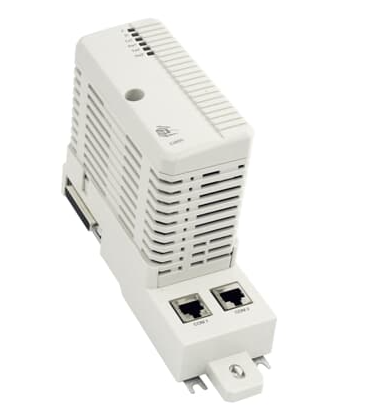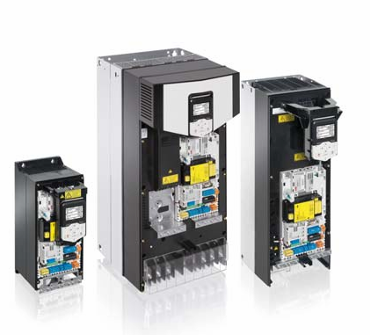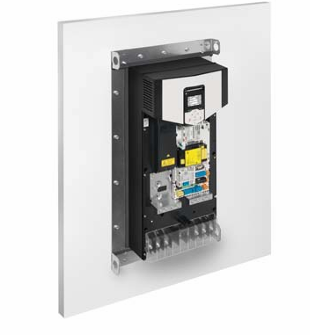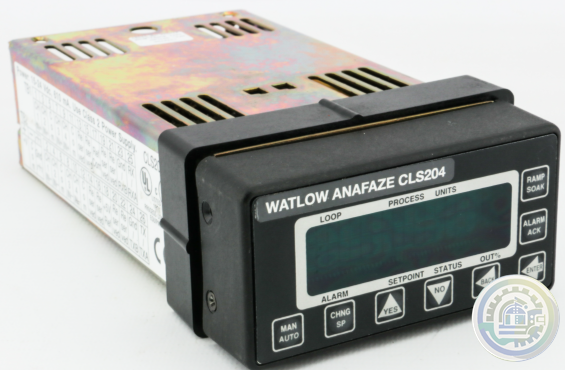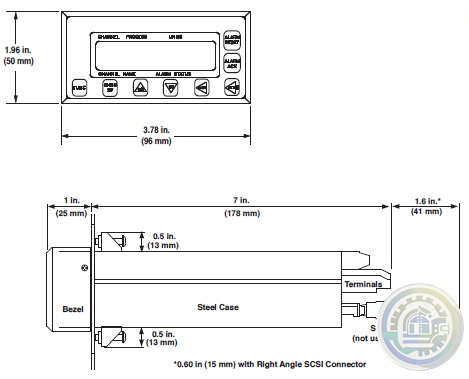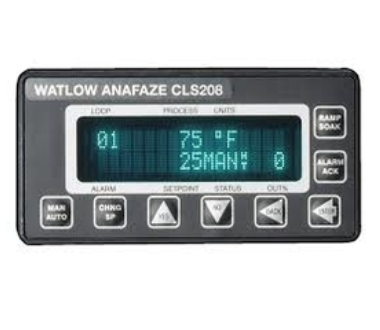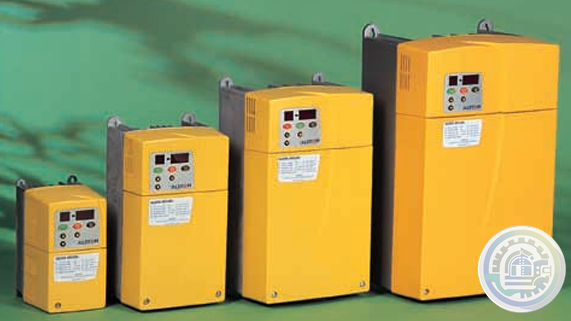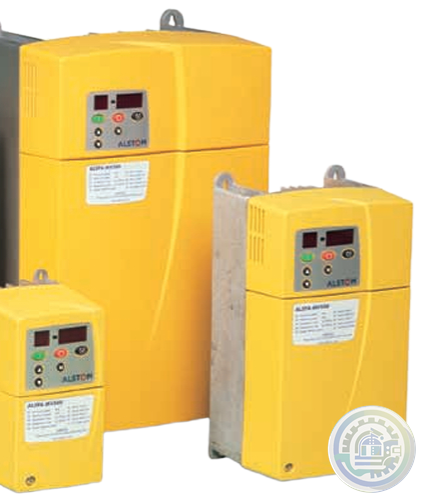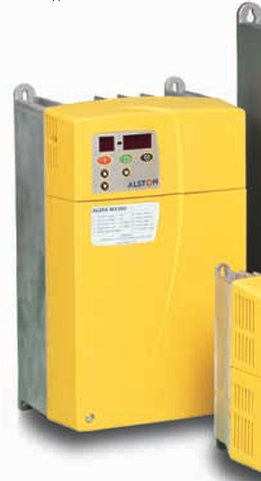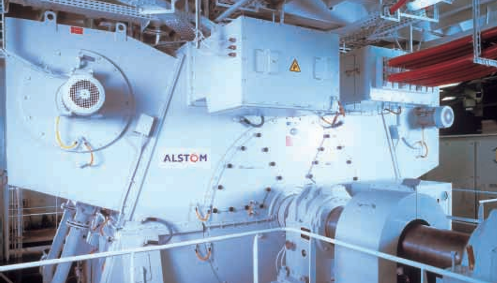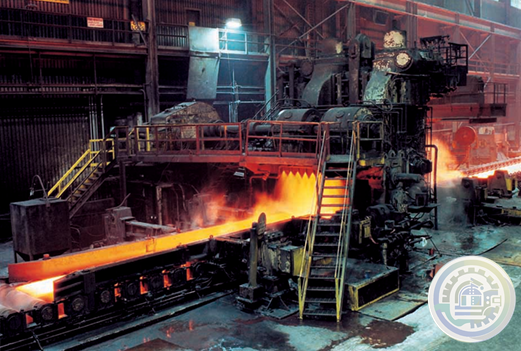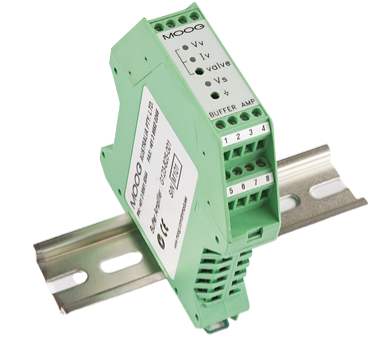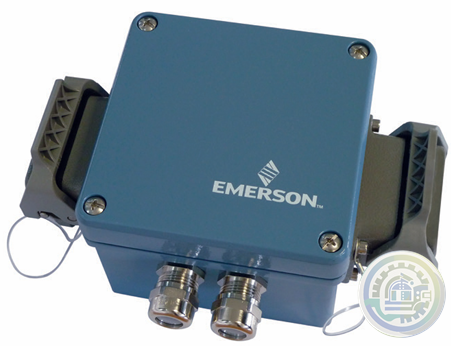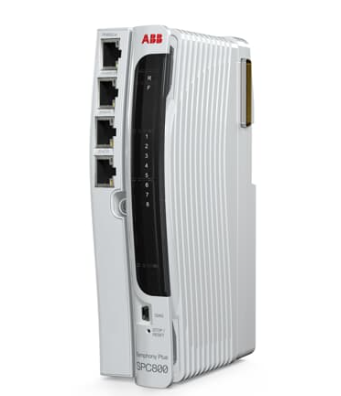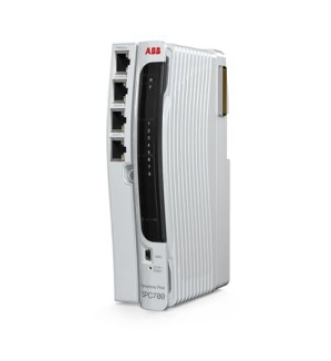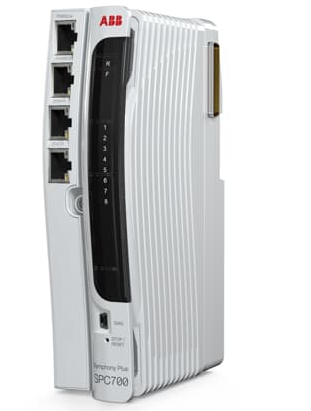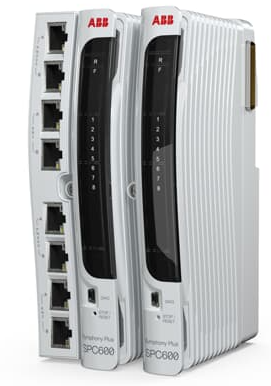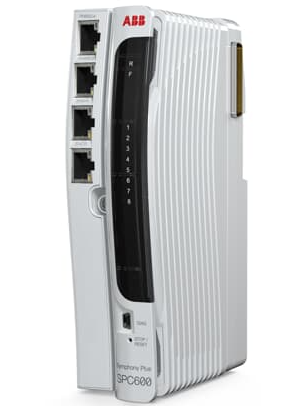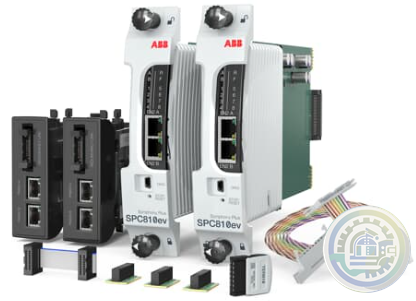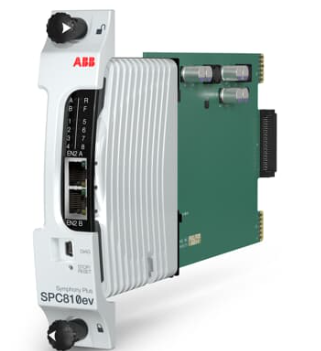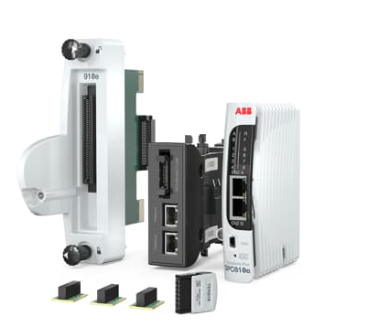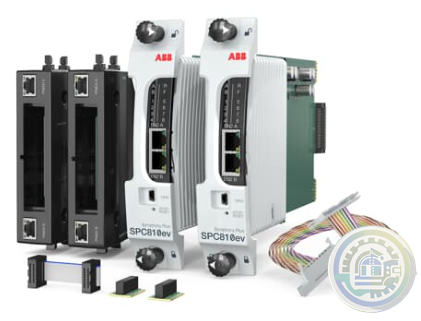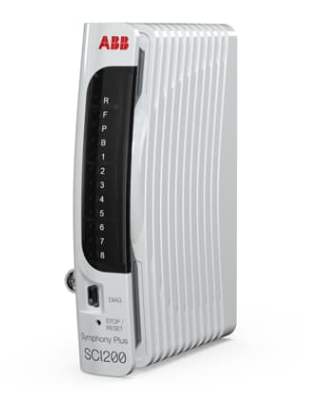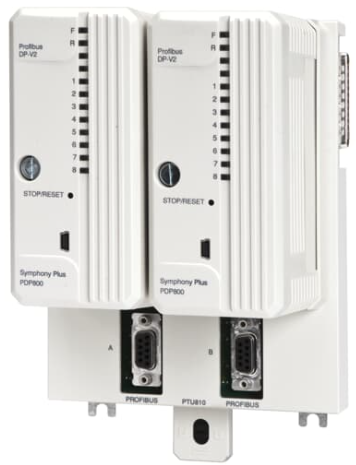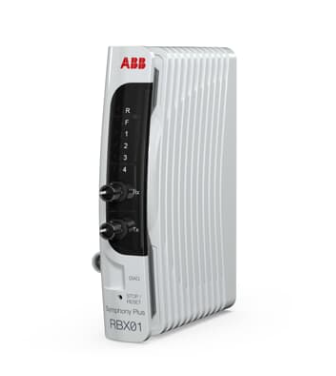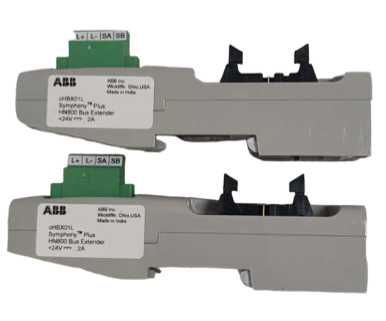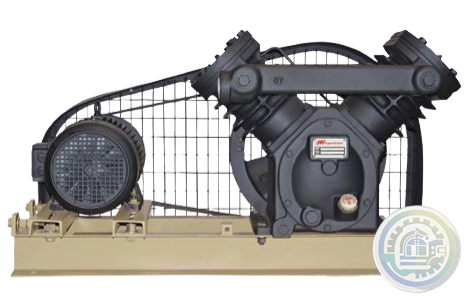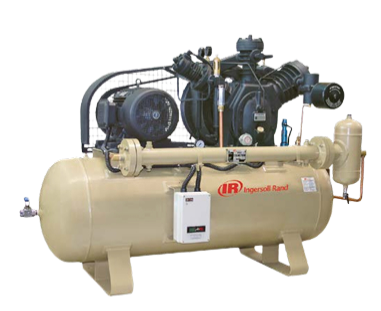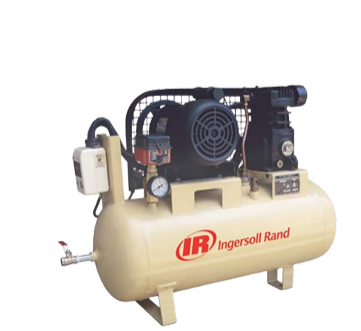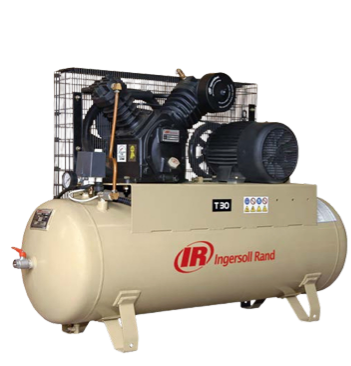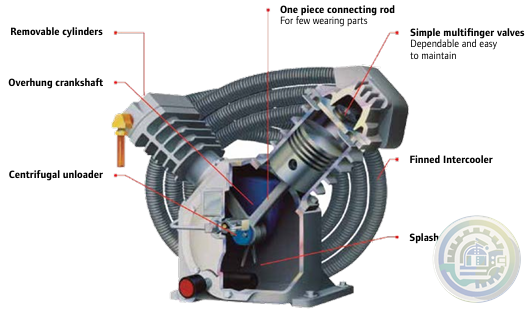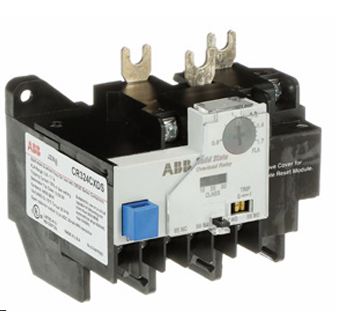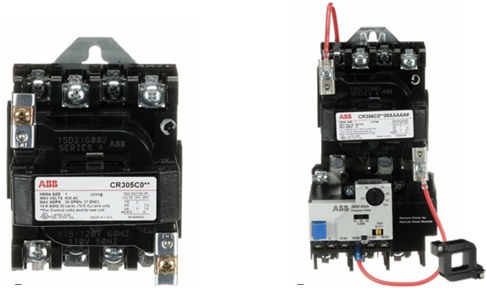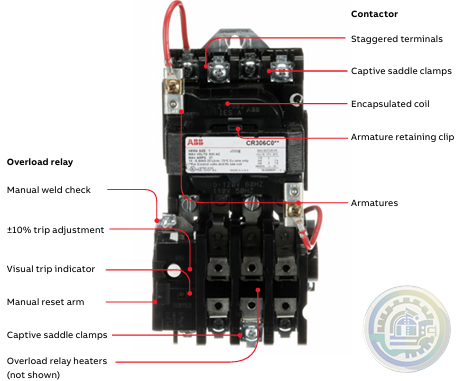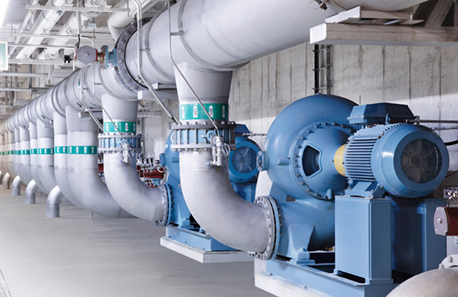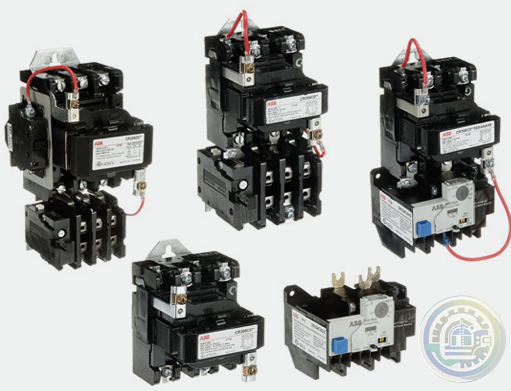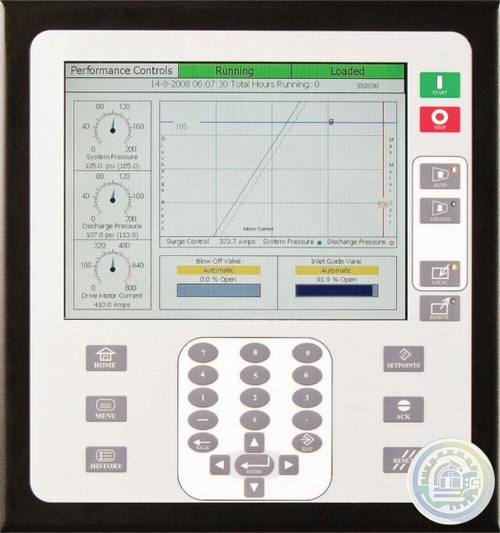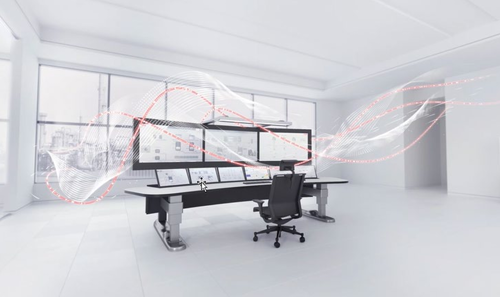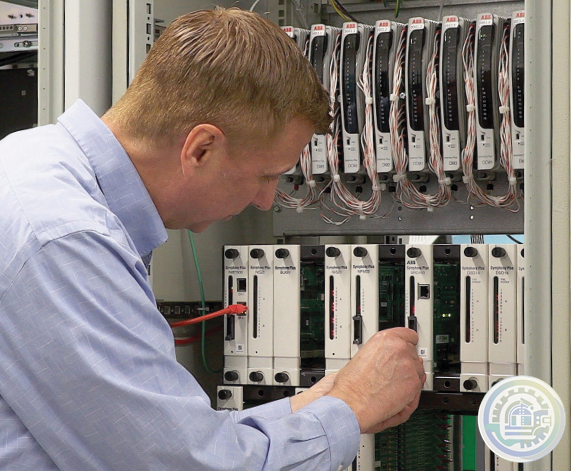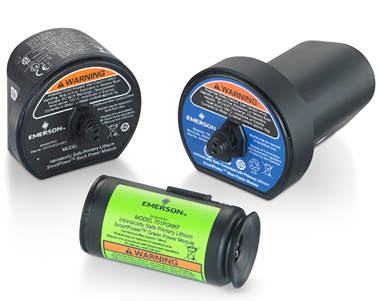-
Alstom 029.232 446 Central Unit VME A32/D32 | COP 232.2
-
ABB REF610B11LCNP Feeder Protection and Control
-
A-B 1794-IN106 Input/Output Analog Modules
-
General Electric 029.381208 Converteam Controller Module
-
Eaton XIOC-BP-3 Moeller 3-Signal Module Backplane
-
Emerson Fisher™ WhisperFlo™ Aerodynamic Noise Attenuation Trim
-
Emerson Fisher™ Whisper Trim™ I Cage
-
Emerson Fisher™ Whisper Trim™ III Cage
-
Emerson Fisher™ 6060 WhisperTube Modal Attenuator
-
Emerson Fisher™ easy-e™ EA SERIES Control Valve
-
Emerson Rosemount 8700 Series Magnetic Flowmeter Systems
-
Emerson Damcos™ BRC 250 Hydraulic Double-acting Balanced Rotary Actuator 90° (Quarter-turn)
-
Emerson Model M250N Mounting of Rack Mount Enclosure
-
Emerson Model M250N Controlinc Network Controller System Configuration
-
Emerson Controlinc Network Master Model M250 Version 5.2
-
Emerson DCMlink Software
-
Emerson M250 Controlinc Network Master
-
Emerson AMS Trex Device Communicator
-
Emerson AMS Trex™ Device Communicator with embedded Bluetooth® connectivity
-
Emerson S-series Horizontal Carriers Product Description
-
Emerson S-series Horizontal Carriers Modular design allows flexible installation
-
Emerson S-series Horizontal Carriers
-
DEIF TAS-331DG AC transducer for active or reactive power
-
DEIF RMV-112D Undervoltage and overvoltage relay, U< and U>
-
DEIF DPS-1 DC Power Supply
-
DEIF DM 400 hydro Integrated systems
-
DEIF DBC-1 Battery charger
-
DEIF CSQ-3 Multi-function synchroscope
-
DEIF CODESYS Programming editor and debug
-
DEIF CODESYS Features Software - AWC 500 development package
-
DEIF AMC 300 Features Advanced Programmable Controller
-
DEIF AMC 300 Performance and system design freedom
-
DEIF AMC 300 Flexible solution design options
-
DEIF AMC 300 Advanced Programmable Controller
-
DEIF AGI 400 Features Advanced graphical interface
-
DEIF AGI 400 Advanced graphical interface
-
DEIF BRW-2 & BW Analogue illuminated bridge wing indicators
-
DEIF Basic control package for mobile generators
-
DEIF AWC 500 - G59/3 Integrated G59/3 protection turbine controller unit
-
DEIF AWC 500 Advanced Controller
-
DEIF ASK & ASR Measuring transformer
-
DEIF ASC-4 Battery Energy source, power source, or droop mode
-
DEIF ASC-4 Battery Automatic Sustainable Controller
-
DEIF ASC plant management Ideal for self-consumption applications
-
DEIF ASC plant management Automatic sustainable controller
-
DEIF AOP Additional operator panel
-
DEIF AMC 600 Fast, fail-safe, and secure system software
-
DEIF AMC 600 Wide range of protocols supported
-
DEIF AMC 600 Programmable automation controller with EtherCAT based I/O
-
DEIF AL8-2 Alarm panel
-
DEIF AGC 150 Hybrid Advanced Genset Controller
-
DEIF AGC 150 PMS Lite Simple power management controller
-
DEIF AGC 150 Generator Advanced Genset Controller
-
DEIF AGC 150 Remote Display Remote access and control unit
-
DEIF MVR-250 series Medium Voltage Relay
-
DEIF MVR-210 series Medium Voltage Relay
-
DEIF The SGC series
-
DEIF Advanced paralleling and power management controllers
-
DEIF Engine and single genset controllers
-
DEIF iE 350 Marine Highly flexible and cybersecure intelligent energy controller
-
DEIF iE 250 Marine Versatile and cybersecure intelligent energy controller for maritime applications
-
DEIF iE 150 Marine Simple and effective power management
-
DEIF iE 150 Marine Cost-effective and flexible controller for coastal, harbour, and inland vessels
-
DEIF iE 650 PLC Fast, fail-safe, and secure system software
-
DEIF iE 650 PLC Performance and flexibility with module concept
-
DEIF iE 650 PLC Extreme robust Programmable Automation controller with EtherCAT based I/O
-
DEIF iE 350 PLC Performance and system design freedom
-
DEIF iE 350 PLC Robust right out of the box
-
DEIF Advanced Features of the iE 350 PLC Controller
-
DEIF iE 250 PLC Versatile and modular intelligent energy PLC controller
-
DEIF XL / BW / BRW-2 Illuminated indicators
-
DEIF SGC 120/121 Single Genset Controllers
-
DEIF Load Sharing Unit LSU-112DG
-
Watlow F4T Base Specifications
-
Watlow F4T Key Features and Options 1/4 DIN Process Controller
-
Watlow F4T 1/4 DIN Process Controller Features and Benefits
-
Watlow F4T 1/4 DIN Process Controller
-
Watlow ASPYRE® AT Power Controllers Specifications
-
Watlow ASPYRE® AT Power Controllers
-
Watlow ASPYRE® DT Power Controllers Features and Benefits
-
Watlow ASPYRE® DT Power Controllers
-
Watlow ASPYRE® Power Controllers Features and Benefits
-
Watlow ASPYRE® Power Controllers
-
Watlow SERIES F4 Specifications 1/4 DIN Ramping Controllers
-
Watlow SERIES F4 1/4 DIN Ramping Controllers Features and Benefits
-
Watlow SERIES F4 1/4 DIN Ramping Controllers
-
ABB CI869 Ability™ System 800xA® hardware selector
-
CI867A ABB Ability™ System 800xA® hardware selector
-
CI860 ABB Ability™ System 800xA® hardware selector
-
ABB CI855 Ability™ System 800xA® hardware selector
-
ABB Single drive modules ACS880-01, frame sizes R1, R8 and R5, IP20
-
ABB Single drive modules, ACS880-01 with option +P940
-
Watlow Anafaze CLS200 Controller 204-1200000
-
Watlow SERIES CLS200 Specifications
-
Watlow SERIES CLS200 DAC and SDAC Modules
-
Watlow SERIES CLS200 Powerful line of controllers
-
ALSTOM ALSPA®MV500 Drive Dependable Drives – Reliable Support
-
ALSTOM ALSPA®MV500 Drive Small in Size – Big on Features
-
ALSTOM ALSPA®MV500 Drive Easy to use – Simple to install
-
ALSTOM Common Programming Tools for all Drives and Automation
-
ALSTOM Drives ALSPA DRIVE RANGE Drive solutions for all applications
-
ALSTOM Power Conversion ALSPA DRIVE RANGE Drive solutions for all applications
-
MOOG G123-825-001 Buffer Amplifier
-
Emerson AMS 3120 Bearing-Vibration Monitor
-
ABB SPC800VK01 Ability™ Symphony® Plus Hardware Selector
- Studer
- Watlow
- AEG
- ADVANCED
- KEBA
- Bristol Babcock
- Rolls-Royce
- Aerotech
- APPLIED MATERIALS
- Basler
- SAACKE
- BENDER
- Kollmorgen
- MEGGITT
- METSO
- MITSUBISHI
- MTL
- HIMA
- Siemens
- BACHMANN
- AMAT
- DEIF
- DELTATAU
- EATON
- ELAU
- LAM
- SCHNEIDER
- Advantest
- ABB
- GE
- Emerson
- Motorola
- A-B
- KUKA
- Abaco
- HITACHI
- SST
- Vibro-Meter
- Rexroth
- Prosoft
- DFI
- Scanlab
- Reliance
- Parker
- Woodward
- MOOG
- NI
- FOXBORO
- Triconex
- Bently
- ALSTOM
- YOKOGAWA
- B&R
- UNIOP
- KONGSBERG
- Honeywell
- Omron
- CTI
- EPRO
- Tell:+86-18144100983
- email:kongjiangauto@163.com
- Application:wind/ petroleum/ chemical/ natural gas/ Marine/ mining/ aviation/ electronics/ steel/ nuclear power/ electric power/ coking/ air separation and so on
- Series:PLC/ DCS/ servo/ analog/ Ethernet/ digital/ redundant module/ tension system/ excitation/ generator management/ human-machine interface/ detection card/ sensor/ AC drive/ etc
Part Number is420ucsch1b Manufacturer General Electric Country of Manufacture As Per GE Manufacturing Policy Series Mark VIe Function Module Availability In StockIS420UCSCH1B is a Quad Core Controller manufactured and designed by General Electric. It is a part of the Mark VIe Series used in GE Distributed Control Systems. It is a version of the quad-core controller that is used with the QNX Neutrino operating system. TMR, Simplex, and Dual redundancy are supported by the component. The QNX operating system is used in high-speed, highly reliable industrial applications. Another type of technology used on this controller is Embedded Field Agent (EMA) technology, which allows Predix cloud-based applications and possibly web applications to be applied over a stable connection, allowing real-time data to be delivered to the connecting controllers. IS420UCSCH1B Features The controller comes with 4 GB of DDR3-1333 SDRAM, which is a type of memory used in computers and other digital devices for high-speed data storage. The controller has 5 Ethernet ports, which allow it to connect to other devices and networks for data transfer and communication. The controller uses ControlST as its Human-Machine Interface (HMI), which is a software application used to interact with and control the device. The Mark VIe quad-core controller runs high-speed, high-reliability industrial applications using real-time hypervisor technology and QNX Neutrino, a real-time, multi-tasking operating system (OS). PredixTM cloud-based apps and/or locally hosted web applications are applied through a secure connection and delivered real-time data using embedded field agent (EFA) technology. A software package tailored to the UCSCH1x controller's use is preloaded. It leverages IONet interfaces as a turbine or balance of plant (BoP) controller and runs Mark VIe firmware and applications. Only supporting Mark controls I/O packs and controllers, IONet is a private special-purpose Ethernet. To synchronize the clocks of the I/O modules and controllers to within 100 microseconds, IEEE 1588 protocol is employed through the IONet interfaces. With the IONet connections, external data is transmitted to and from the controller's control system database. To the I/O modules, this also refers to process inputs and outputs. The UCSC controller lacks any application I/O, in contrast to conventional controllers that host application I/O on a backplane. Operation The operation of the system involves several key aspects, including the installation of the ToolboxST application, configuring the UDH network communication, and establishing the necessary IP address for communication with site HMIs. Here is an expanded explanation of these operations: ToolboxST Application Installation: To facilitate configuration and management tasks, the ToolboxST application is typically installed on a minimum 4 GB unencrypted flash drive. This flash drive serves as the storage medium for the application and contains the necessary files and settings. The ToolboxST application provides a user-friendly interface for configuring various aspects of the system, including network communication. UDH Network Configuration: The UDH (User Datagram Header) network is utilized for communication within the system. During the configuration process, the ToolboxST application is employed to define the communication parameters for the UDH network. This involves setting up network addresses, ports, protocols, and other relevant settings. The configuration ensures that the control module can establish reliable and secure communication with other devices and systems within the network. Default IP Address: By default, the control module is assigned the IP address 192.168.101.111. This IP address serves as the initial configuration for the module's network connectivity. However, it is important to note that this default IP address may need to be modified to match the specific requirements and setup of the site or network where the system is deployed. Configuring Relevant UDH IP Address: In order for the control module to effectively communicate with the site HMIs (Human-Machine Interfaces), it must be configured with the relevant UDH IP address. This IP address is specific to the UDH network and enables seamless communication between the control module and the site HMIs. Through the ToolboxST application, the control module's IP address can be customized and set to the appropriate value that aligns with the network configuration and addressing scheme of the site. Virtual Network The virtual network feature in controllers is a powerful capability provided by the hypervisor, enabling seamless communication and data exchange between virtual machines (VMs) running on the same physical machine or across multiple physical machines in the network. The virtual network functions similarly to a conventional Ethernet network, facilitating data transmission between VMs just as physical Ethernet networks facilitate data transfer between physical machines. Virtual network plays a crucial role in connecting different components of the system and enabling efficient data transfer. Specifically, it facilitates data exchange between the Embedded Field Agent (EFA) and the Mark VIe control, both of which run as separate VMs on the UCSCH1 controller. Here's how the virtual network enables data communication between the EFA and the Mark VIe control: EFA and Mark VIe Control VMs: In the UCSCH1 controller, the EFA and the Mark VIe control are both running as virtual machines (VMs) within the same hypervisor environment. Each VM operates independently, emulating separate computing environments within the same physical machine. Data Transfer through Virtual Network: When data needs to be exchanged between the EFA and the Mark VIe control, it is transmitted through the virtual network provided by the hypervisor. The virtual network efficiently routes the data between the two VMs, enabling seamless and fast communication. Connection to the Cloud: The EFA, being an essential component for remote monitoring and management, requires a connection to the cloud for data exchange with remote servers or cloud-based applications. This connection allows the EFA to send data to the cloud and receive commands or updates from the cloud-based systems. Physically Managed Switch for Network Division: To maintain proper network segregation and security, a physically managed switch is used to divide the networks. The physically managed switch creates distinct network segments, ensuring that the Mark VIe control, which contains sensitive control data, remains isolated from the cloud network. This network division helps protect critical control systems from potential external threats. By leveraging the virtual network, the controller achieves efficient and secure data communication between its different VMs, enabling seamless coordination and control of various components in the system. The integration of a physically managed switch adds an extra layer of security, ensuring the safety and integrity of critical control systems while allowing the EFA to establish connections with cloud-based systems for enhanced functionality and remote monitoring capabilities. Ethernet Ports/Controller Communications Support 3 IONet ports (R/S/T) for I/O module communications (simplex, dual, TMR, and Shared I/O supported). ENET 1 - EGD/UDH communications to ToolboxST PC, HMIs, UCSCS2A Safety controller, and GE PACSystems products. Modbus TCP Slave, Read/Write. ENET 2 - Secondary UDH communications, Modbus TCP Slave and OPC UA. IICS Cloud port for Embedded Field Agent (EFA). Module Ports The control module is equipped with various ports on its front and bottom panels, serving different purposes and enabling connectivity and functionality. Here is an expanded explanation of each port: Ethernet Ports: The front panel of the module features five Ethernet ports. These ports are used for establishing network connections and enabling communication with other devices or systems within the network. Predix Connectivity Port: Located on the bottom panel, this Ethernet port is specifically designated for connectivity to Predix, a cloud-based platform developed by GE. It facilitates data exchange and integration with Predix for enhanced monitoring and analytics capabilities. USB Ports: The module has two USB ports, which are primarily used for specific functions. These ports are typically utilized during the initial setup of the UDH (User Datagram Header) network IP address. Additionally, they can be utilized for a restore function, allowing for the restoration of the module's configuration or software. COM Port: The COM port is a serial communication port that employs an RJ-45 connector and operates at a speed of 115200 bits per second (bit/s). The configuration for this port is 8N1, which denotes eight data bits, no parity bit, and one stop bit. This port does not employ flow control and is commonly used by GE for troubleshooting purposes in the field. It supports the serial redirection of UEFI-setup, facilitating configuration adjustments and troubleshooting activities. Display Port: The module features a Display Port, although it is disabled after the system's startup. The Display Port is typically used to connect an external display device for video output, but its functionality is limited or deactivated once the module is operational. microSD Port: While the module includes a microSD port, it is not currently supported. The microSD port is designed to accommodate a microSD card, which can be utilized for storage purposes. However, in this particular system, the functionality of the microSD port is not enabled or actively supported. Product Attributes Altitude for Normal Operation: Designed to operate within an altitude range of 0-1000 meters. It can function reliably in environments with varying atmospheric pressure, ranging from 101.3 to 89.9 kilopascals (kPa). This attribute ensures that the module can maintain optimal performance even at different altitudes. Dimensions with Mounting: The module has specific dimensions when considering its mounting. It has a height of 8.03 inches, a depth of 5.99 inches, and a width of 2.17 inches when properly mounted. These dimensions provide guidance for installation and integration into the overall system architecture. HMI (Human-Machine Interface): Supports ControlST V07.00.00C or later as its human-machine interface. The HMI facilitates interaction between the module and the human operator, allowing for intuitive control, monitoring, and configuration of the system. Memory Type: The module is equipped with 4 GB DDR3-1333 SDRAM memory. This type of memory is commonly used for storing and processing data within the module. The 4 GB capacity provides sufficient space for efficient data management and enables the module to handle complex control algorithms and calculations effectively. Number of Ethernet Ports: Features a total of six Ethernet ports. Five of these ports are located on the front panel, providing convenient access for networking purposes. Additionally, one Ethernet port is available on the bottom of the module, specifically designed for Predix connectivity. These Ethernet ports facilitate seamless communication and data exchange between the module and other devices or systems within the network. NVSRAM (Nonvolatile Static Random-Access Memory): The module incorporates NVSRAM, which includes 3067 nonvolatile program variables, 64 totalizers, and 338 forces. NVSRAM allows the module to retain critical information, such as program variables and configuration settings, even during power outages or system failures. This attribute ensures data integrity and reliability, crucial for applications where data loss is not acceptable. Platform Configuration Supported Features: Supports EFA (Embedded Functionality Automation), Embedded EtherCAT (Ethernet for Control Automation Technology), and Embedded PPNG (Predix Process & Notification Gateway) as its platform configuration features. These advanced networking capabilities enhance the module's connectivity, compatibility, and overall performance in complex industrial control systems. Storage Temperature: The module is designed to withstand a wide range of storage temperatures, from -40 to 85 degrees Celsius. This attribute allows the module to be stored safely in environments with extreme temperature conditions, ensuring its durability and long-term reliability. Diagnostics The Control Module's circuit cards include system (software) limit checking, high/low (hardware) limit checking, and comprehensive diagnostics for abnormal hardware conditions. System limit checking consists of two limits for each analog input signal, which can be set with the I/O Configurator in engineering units for high/high, high/low, or low/low. Each input limit can be configured for latching/non-latching and enable/disable. System limit checking logic outputs are generated per frame and stored in the database (signal space) for use in control sequencing and alarm messages. Each analog input has high/low (hardware) limit checking, with typically two occurrences required before an alarm is triggered. These limits are not programmable and are chosen to be outside the normal control requirements range but within the linear hardware operational range (before the hardware reaches saturation). The software maintenance tools provide access to diagnostic messages for hardware limit checks and all other hardware diagnostics for the card (Control System Toolbox). In the database, each card has a composite logic output, and another logic output indicates a high/low (hardware) limit fault of any analog input or the associated communications for that signal. Characteristics HMI: ControlST - The human-machine interface (HMI) used in this system is ControlST. ControlST is a software or hardware component that allows users to interact with and control the system. Trip Solenoid Rating: 125 V dc - The trip solenoid used in the system has a rating of 125 volts direct current (V dc). The trip solenoid is an electromechanical device that is used to trip or close circuit breakers or other devices in response to specific conditions. Span: -8 mV to +45 mV - The span refers to the range of values that can be measured or controlled. In this case, the system has a span of -8 millivolts (mV) to +45 mV. This indicates that the system can measure or control signals within this voltage range. Power supply voltage: 28 V dc - The power supply voltage for the system is 28 volts direct current (V dc). This voltage is used to provide power to the various components of the system. Voltage Range: 18 - 32 VDC - The system operates within a voltage range of 18 to 32 volts direct current (VDC). This indicates that the system is designed to function properly within this voltage range. Platform Configuration Supported Features: EFA, Embedded EtherCAT, and Embedded PPNG - The platform configuration of the system supports several features, including EFA (Electronic Function Blocks), Embedded EtherCAT (Ethernet for Control Automation Technology), and Embedded PPNG (Powerful Programmable Numeric Gateway). These features enhance the system's capabilities and functionalities. NVSRAM: 3067 Nonvolatile Program Variables, 64 Totalizers, and 338 Forces - The system has NVSRAM (Nonvolatile Static Random Access Memory) that can store 3067 nonvolatile program variables, 64 totalizers, and 338 forces. NVSRAM is a type of memory that retains its stored information even when power is removed from the system. Number of Ethernet Ports: 6 - The system is equipped with six Ethernet ports. Ethernet ports are used for connecting the system to a network, allowing for communication with other devices or systems. Altitude for Normal Operation: 0-1000 m at 101.3 to 89.9 kPa - The system is designed to operate normally within an altitude range of 0 to 1000 meters. The atmospheric pressure range for normal operation is 101.3 to 89.9 kilopascals (kPa). HMI: ControlST V07.00.00C or Later - The specific version of the ControlST HMI used in the system is V07.00.00C or later. This indicates the minimum version requirement for compatibility and functionality with the system. Cable Separation and Routing When it comes to cable separation and routing in control systems, it is important to consider certain factors to ensure optimal system performance. One significant consideration is the prevention of electrical noise interference caused by different voltage levels in the cabling. Electrical noise can disrupt the operation of microprocessor-based control systems, leading to malfunctions or unreliable performance. To mitigate the risks associated with electrical noise interference, it is essential to follow proper guidelines and recommendations during the installation of cables. Before proceeding with the cable installation, it is advisable to consult the relevant manuals and documentation provided by the manufacturer or system designer. These manuals often contain specific instructions and precautions for cable installation in various scenarios. If the installation site presents unique circumstances or if the guidelines mentioned in the documentation cannot be met, it is crucial to seek further guidance or clarification. During the planning stages of system revamps or upgrades, adherence to level rules is highly recommended. Level rules refer to established standards and guidelines for cable separation and routing in control systems. These rules ensure that cables are appropriately organized and spaced to prevent interference and optimize system performance. By considering level rules during the planning process, the chances of a trouble-free installation and proper application of the control system are significantly increased. By following these guidelines and best practices, potential issues arising from electrical noise interference can be minimized. Proper cable separation and routing help maintain the integrity of the control system, ensuring reliable and efficient operation. It is important to prioritize these considerations during the design, installation, and maintenance phases to maximize the performance and longevity of the control system. Environment Features The Mark VIe control system cabinet should be installed in an environmentally controlled room or in the control room itself. The cabinet should be installed in a location where the floor surface allows for attachment in only one plane (a flat, level, and continuous surface). The mounting hardware is supplied by the customer. Lifting lugs are provided, and lifting cables must not exceed 45掳 from the vertical plane if used. Finally, the cabinet has a door handle that can be locked for security. Interconnecting cables can enter the cabinet from the top or bottom via removable access plates. Convection cooling of the cabinet necessitates the sealing of conduits to access plates. Furthermore, the temperature of the air passing through the conduit must be within the acceptable range. This is true for both the top and bottom access plates.Module manufactured by General Electric as part of the Mark VI/VIe Series used in gas turbine sppedtronic control systems
| User name | Member Level | Quantity | Specification | Purchase Date |
|---|


Please do not listen to the advice of non-professional engineers! Cause equipment damage!


wechat/whatsapp:
+86-181-4410-0983
Email: kongjiangauto@163.com
-
Alstom 029.232 446 Central Unit VME A32/D32 | COP 232.2
-
ABB REF610B11LCNP Feeder Protection and Control
-
General Electric 029.381208 Converteam Controller Module
-
Vibro-meter VM600-ABE042 204-042-100-011 Precision Control Module
-
Vibro-meter vmf-MPC4 200-510-111-034 200-510-070-113 Module
Copyright © 2009 - 2024 Cld , All Rights Reserved K-JIANG All rights reserved














